Mobvoi TicWatch GTH Pro: keep tabs on your ticker’s plumbing
The TicWatch GTH Pro offers plenty of bang for the buck, but has Mobvoi cut too many corners to make it affordable?
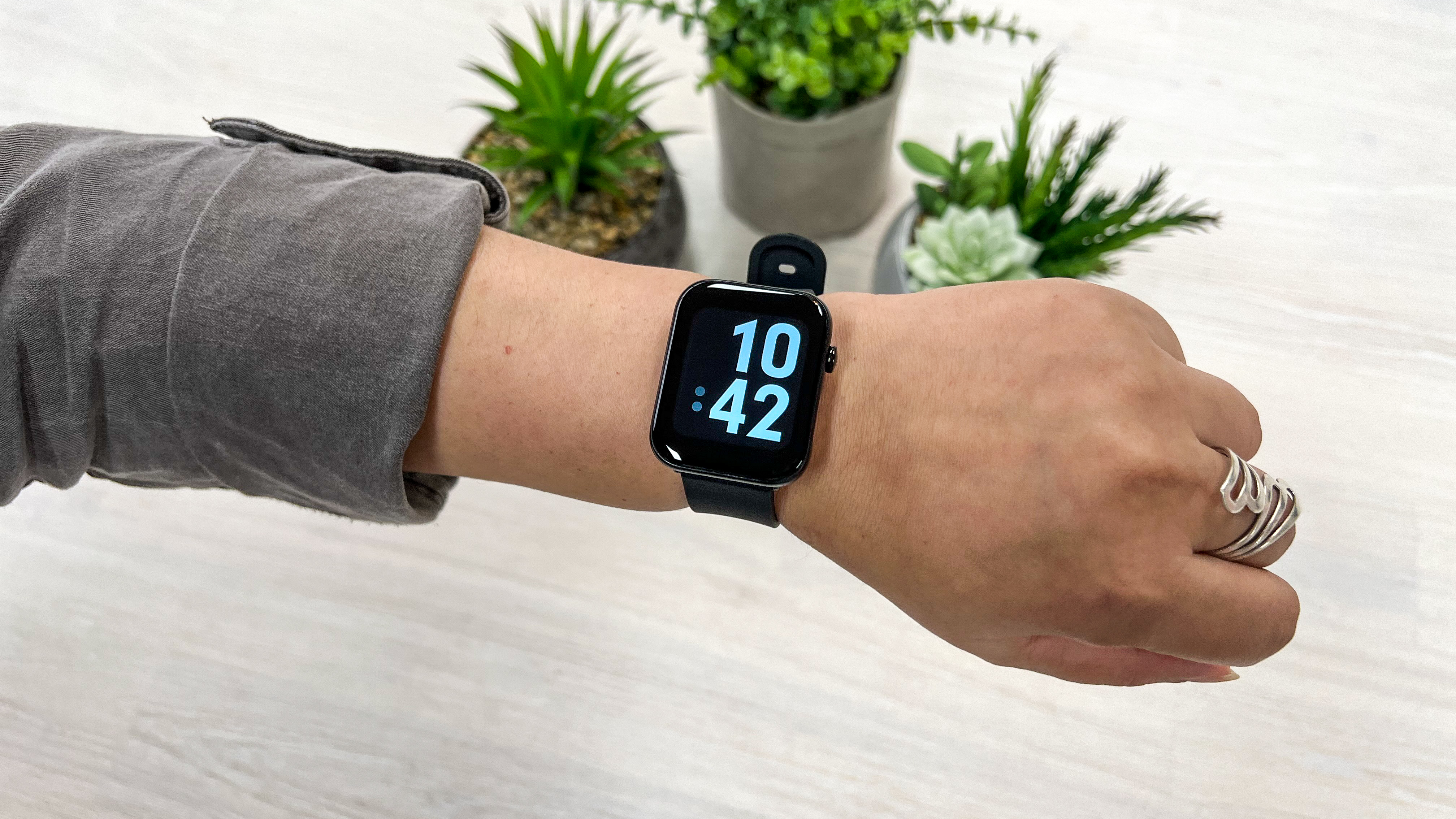
If you’re after a no-frills smartwatch that offers decent value for money, then Mobvoi’s TicWatch GTH Pro is a strong contender. It costs a fraction of the price of the Apple Watch that it resembles, and also offers a way to monitor arterial health. What lets the GTH Pro down is the inconsistency of its cardiovascular monitoring and its poor notification system.
-
+
Arterial health monitoring
-
+
Lightweight and comfortable
-
+
Great battery life
-
+
Affordable
-
-
Inconsistent 'Arty Score' readings
-
-
Poor notification interface
-
-
Thick bezels
-
-
Limited workout modes
Why you can trust T3

Mobvoi has been known for making budget-friendly smartwatches that run Google’s Wear OS. For its second-generation TicWatch GTH Pro, however, the Chinese manufacturer has stepped away from the well-trodden path to use custom RTOS software for its latest offering. Importantly, it stands apart from the crowded smartwatch market by offering a second sensor that can monitor arterial health without the premium price tag of the more popular brands like Apple, Samsung, Garmin and Fitbit.
This headline act comes courtesy of Mobvoi’s partnership with Australian medical company CardieX. Using proprietary tech from the company’s subsidiary ATCOR, the TicWatch GTH Pro boasts additional sensors to collect data from your fingertip and analyze five different metrics to give you a full picture of how your ticker is coping with your lifestyle choices. You’re not getting blood pressure readings or an ECG here, but an Arty Score that’s an indication of your overall heart and arterial health.
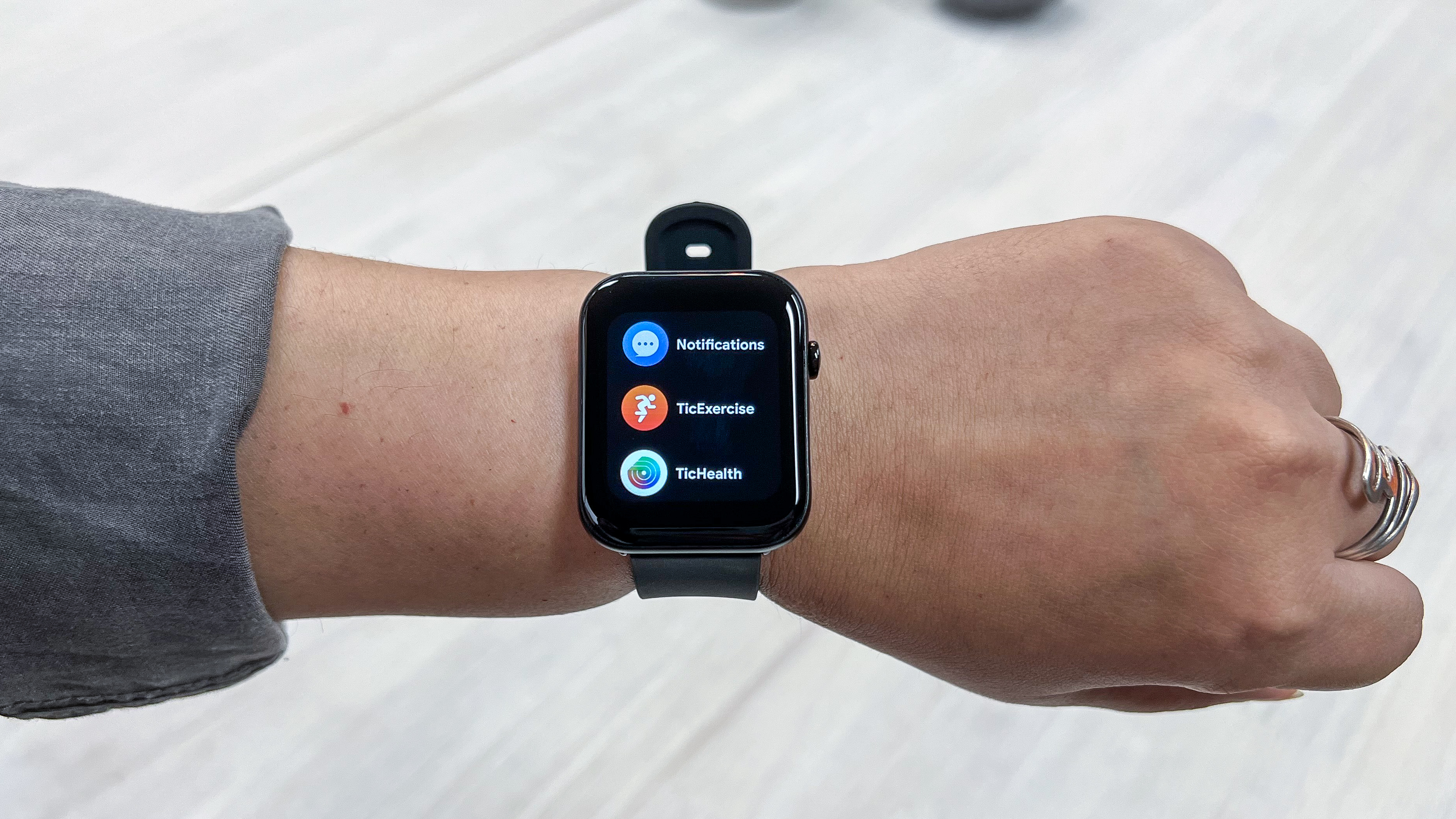
TicWatch GTH Pro review: price and availability
Announced in March 2022, the TicWatch GTH Pro is available to buy directly from the Mobvoi website as well as select online retailers like Amazon. For a smartwatch that comes with proprietary tech to monitor heart health, it’s remarkably affordable at just $99.99 / AU$139.99 (the TicWatch GTH Pro is unavailable in the UK at the time of writing).
Unlike some other TicWatch models, the GTH Pro is only available in a black chassis with a matching rubber strap.
TicWatch GTH Pro review: design and build
The TicWatch GTH Pro takes its design cues from the original GTH that was launched in April 2021. At first glance, it looks remarkably like an Apple Watch (digital crown and all), but look more closely and you’ll find plenty of differences.
The GTH Pro’s 43mm metal chassis houses a 1.55-inch 360 x 320 pixel TFT touchscreen that feels much smaller because of the chunky bezels surrounding it. The display is also not as bright or responsive as its OLED lookalike on an Apple Watch, but at this price point, there really isn’t anything to complain about.
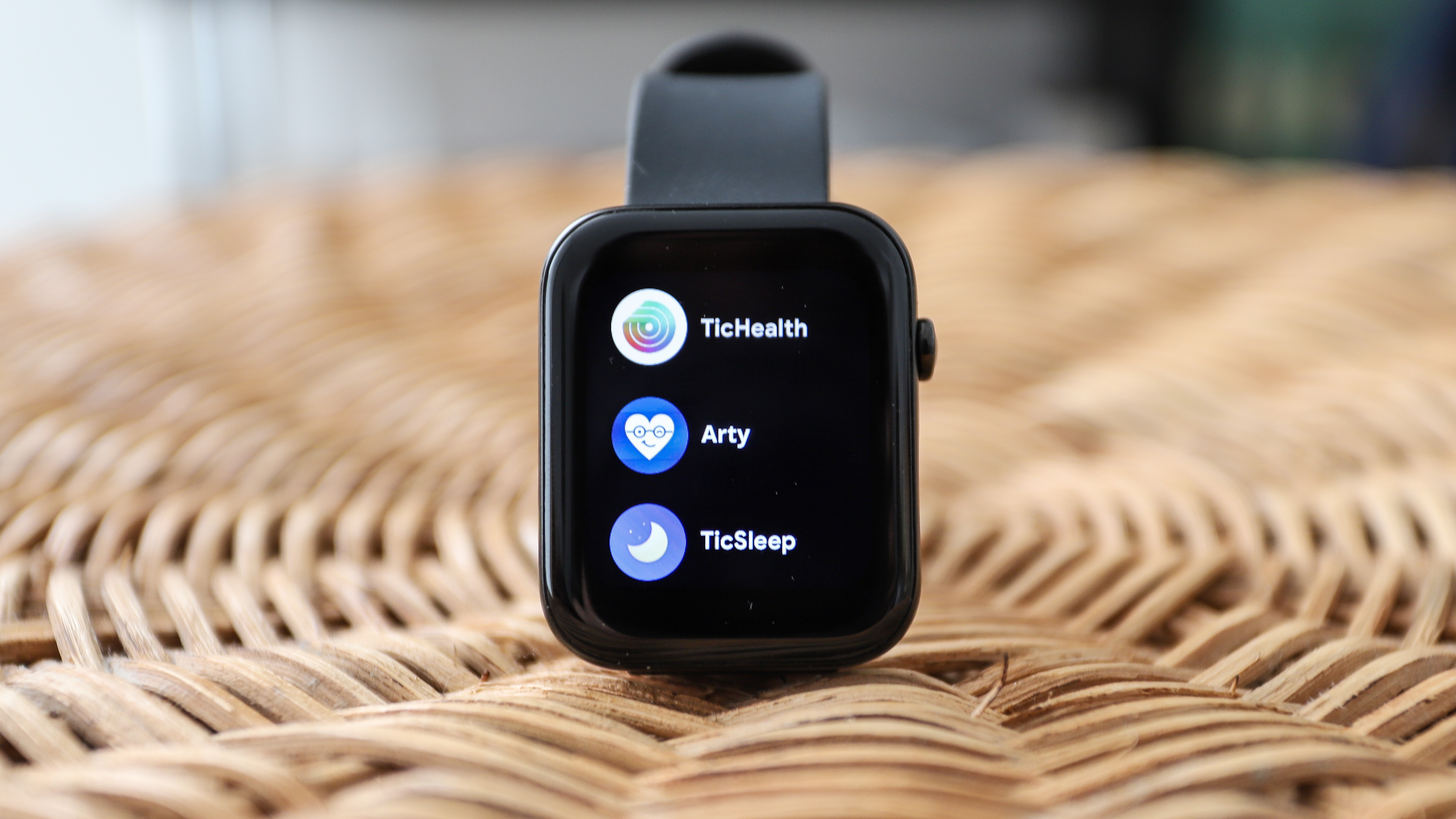
The use of cheaper material is also evident in the 20mm black rubber strap but, again, Mobvoi has had to make sacrifices to manufacture an affordable wearable that boasts advanced metrics. Thankfully it hasn’t come at the cost of waterproofing as there’s the same 5ATM water resistance you’ll get from an Apple Watch, meaning you can take it for a swim in the pool. That’s not to say the TicWatch GTH Pro looks cheap – far from it – and it’s a very lightweight and comfortable device to wear all day and night.
Like any other smartwatch, the main sensors are on the underside of the chassis; these monitor heart rate, SpO2 and skin temperature. The most important change is the second photoplethysmography (PPG) sensor sitting just below the physical button (there's one one the underside of the case as usual). Both PPG sensors use ATCOR’s proprietary SphygmoCor algorithms to produce five metrics that make up a feature called Arty – aptly named as it gives you insight into your arterial health.
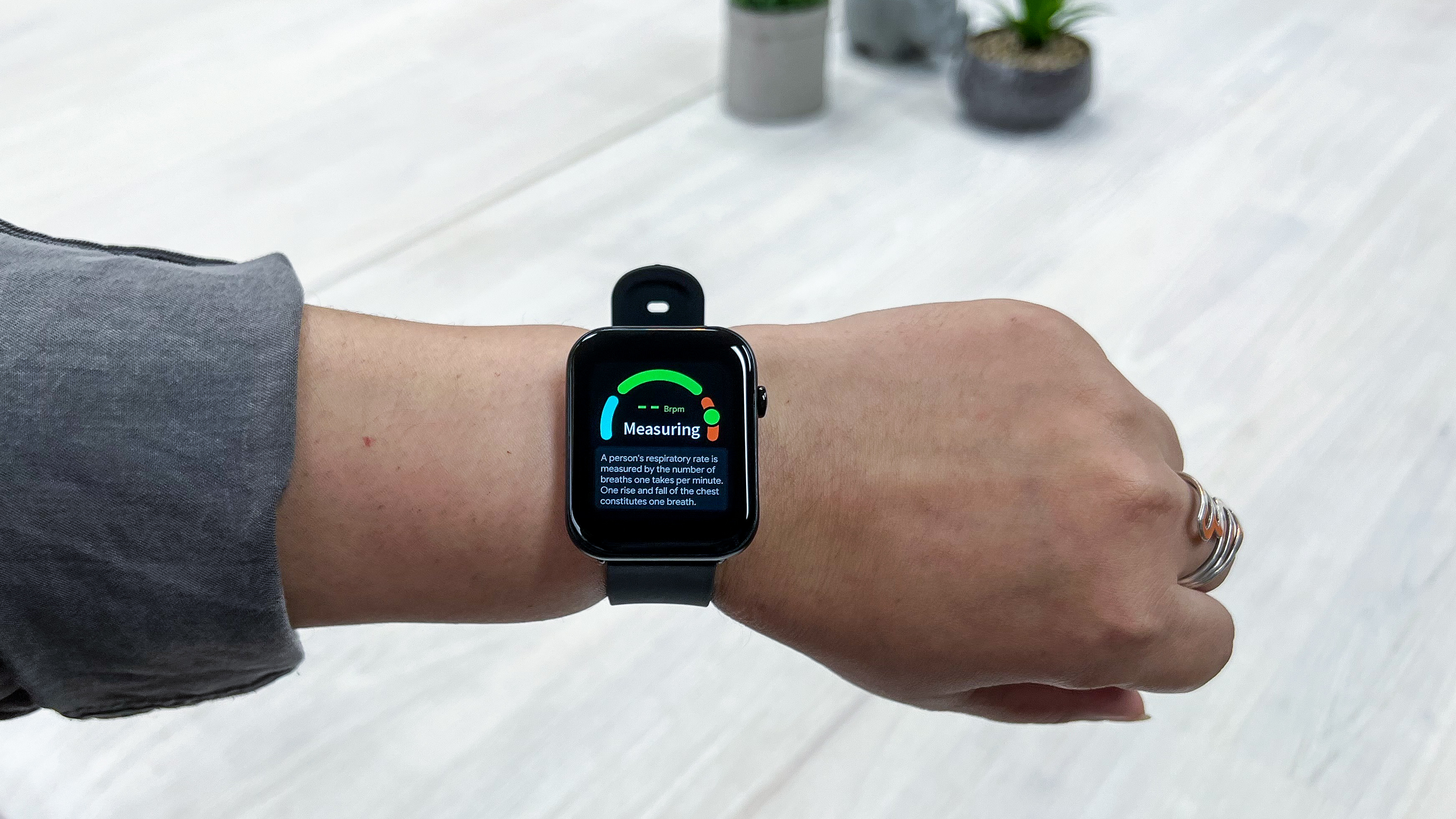
TicWatch GTH Pro review: health and fitness features
As mentioned earlier, the GTH Pro’s headline act is its ability to offer insights into cardiovascular health. It uses a version of the FDA-approved technology from CardieX to do so and it’s important to note the word ‘version’ in this sentence. While the original ATCOR technology is FDA-complaint, the support on the GTH Pro is not. It’s an excellent feature to have, particularly for anyone with blood pressure and cholesterol issues, but the GTH Pro has not been cleared by any medical governing body. So don’t take its readings as gospel, but use it to figure out if you need to see your doctor.
To measure arterial health, you open the Arty app on the watch (a cute heart-shaped icon) by double clicking on the physical button, then lightly placing your forefinger’s tip on the side PPG sensor for 10 seconds… the watch will guide you through it, of course. This produces:
- an Arty Score (an overall heart health score)
- TruHR (heart rate reading similar to an ECG)
- eCAP or Exercise Capacity (measure of the blood flow to the heart)
- HSX or Heart Stress Index (stress levels on the heart)
- and ArtyAge (estimated age of your arteries based on their stiffness)
Long story short, these are metrics that are extremely important to anyone keeping tabs on their ticker… if only the Arty readings were consistent (more on this later).
Other than Arty, you get all the other fitness-related features you’ll find elsewhere. There are 14 workout modes to choose from but there’s no built-in GPS to track any outdoor activity without your paired phone. Sleep tracking is also on board, of course, as are other features like respiratory rate monitoring, guided breathing, music controls, a timer and a stopwatch.
There’s a built-in weather app, and you can change the watch face by either swiping through a few on the device itself or via the companion smartphone app that offers far more options. Of course, notifications come through automatically but, at least on the iOS app, there’s no way to select which apps can push through notifications to your wrist.
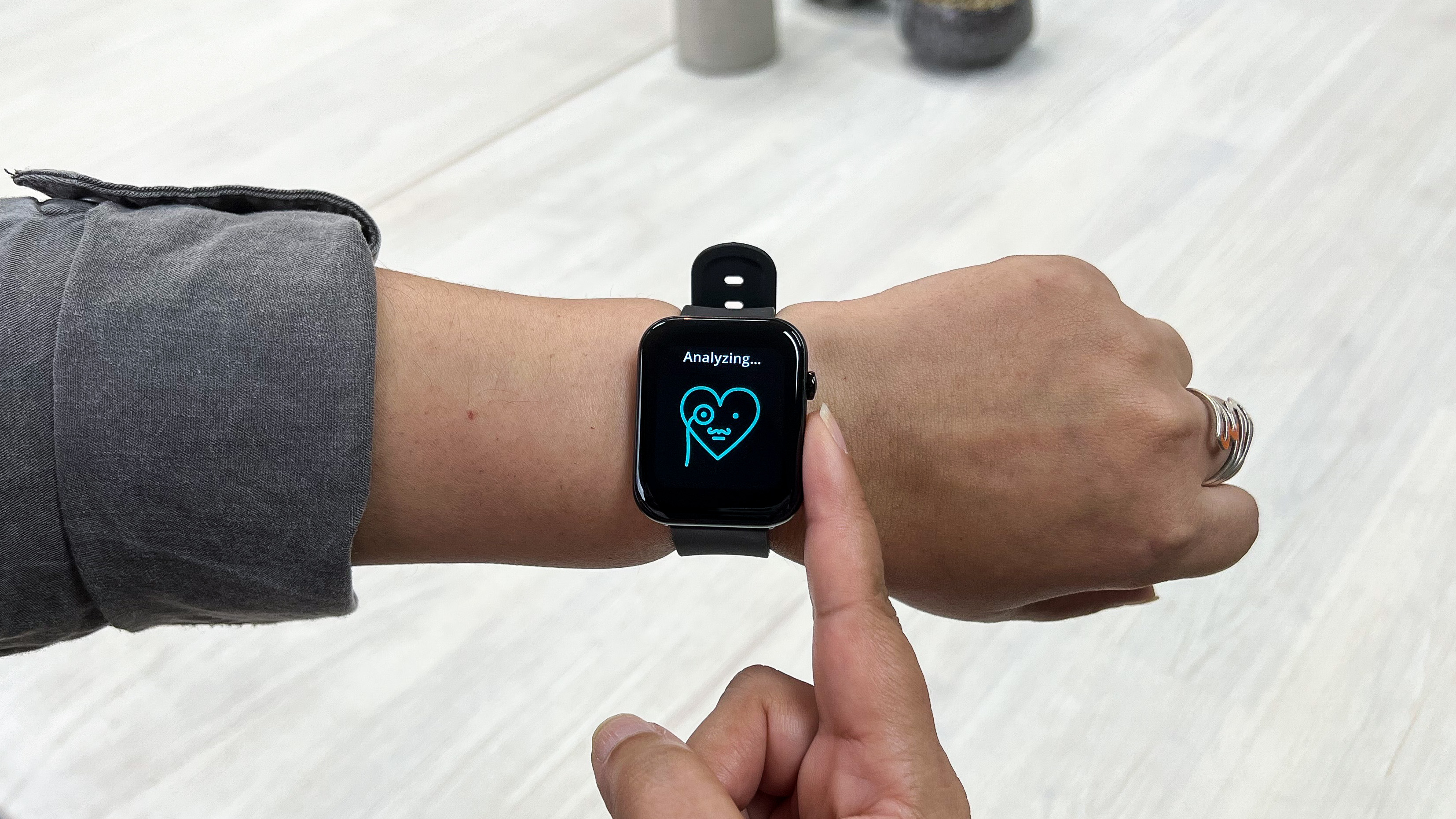
TicWatch GTH Pro review: accuracy and performance
For any fitness wearable accuracy is key, but unless you’re wearing a medical-grade device, chances are you need to take every reading with a teensy pinch of salt. And that’s the case here too. That’s not saying the GTH Pro is inaccurate. We tested the GTH Pro’s heart rate with a Fitbit Versa 3 and a pulse oximeter to find the readings were no more than 1-2 BPM off. Step count is a touch more conservative than the Versa 3; that’s because the Fitbit recognizes even a step or two taken to, say, get a glass of water, but the TicWatch starts counting only after you’ve taken 3-5 steps and we don’t mind that at all.
Its Arty readings, however, are quite inconsistent. Firstly, it took us a few tries before we could even get our first reading and, secondly, when it did start working, we got a range of ArtyAges from 30-40 (which matches the doctor’s prognosis for this 43-year-old reviewer), all the way to 70-80 years (which scared the bejesus out of me). There are trends that emerge sometimes over a couple of days’ monitoring now and then, but they quickly change, which is far from ideal.
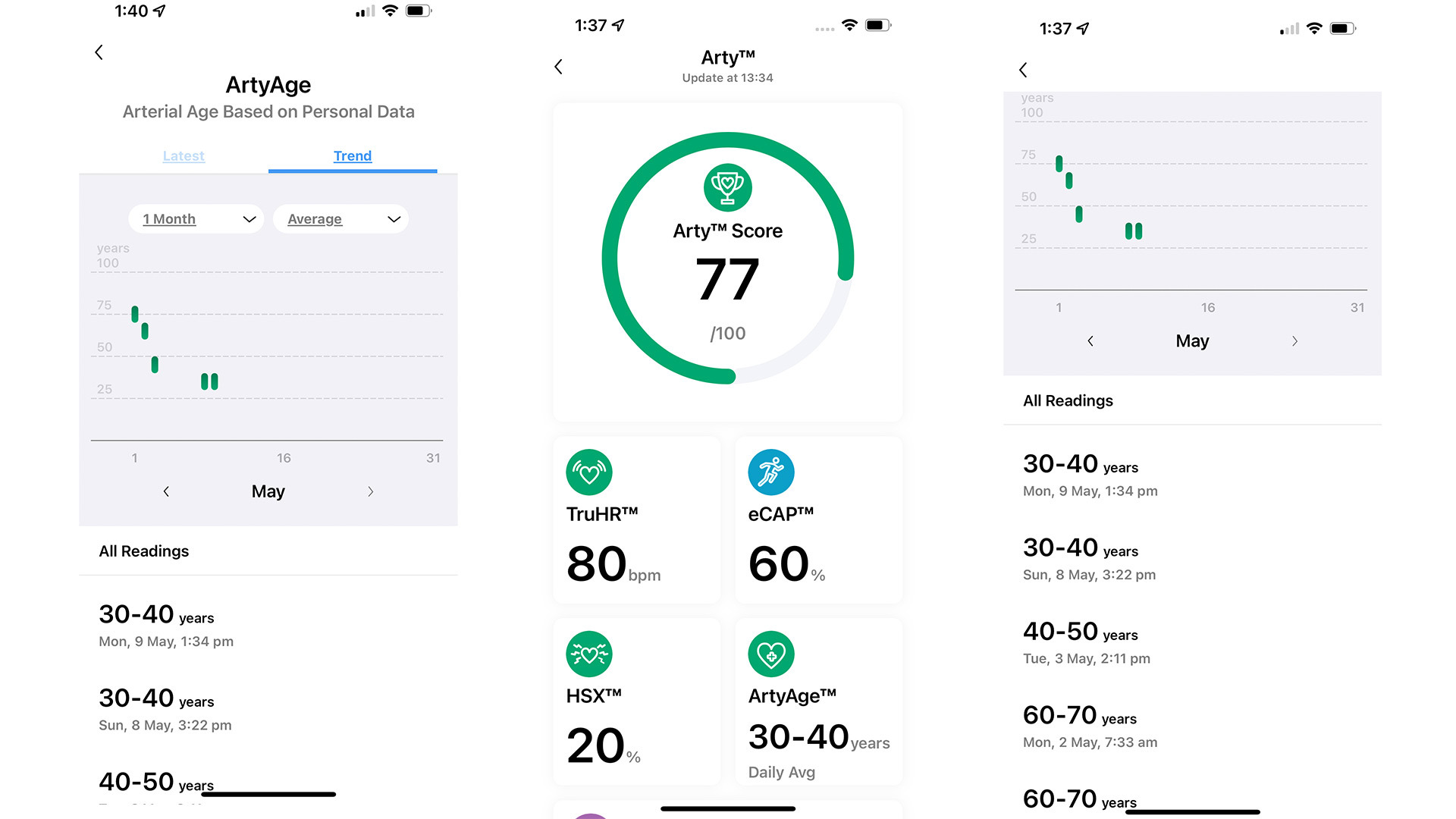
We found that the GTH Pro also struggles to track sleep when you first start using it. It took us a few nights of use before reliable readings were taken, so it seems like the device requires a little warming up before it can do everything it should.
Another area where the GTH Pro is lacking is the notification interface. While notifications from every single app on our paired iPhone 13 Pro appeared on the wrist, you only get a partial view. If the message is long, you cannot tap to expand and scroll. Emojis don’t render on the GTH Pro screen either. And, like several other budget wearables, you can’t respond to any notification from the device itself.
This issue, however, is more to do with the GTH Pro’s operating system. Running an RTOS software means the wearable prioritises battery life and performance over app and notification support. In fact, you can’t even set an alarm on the watch – you’ll need to do so on the companion app.
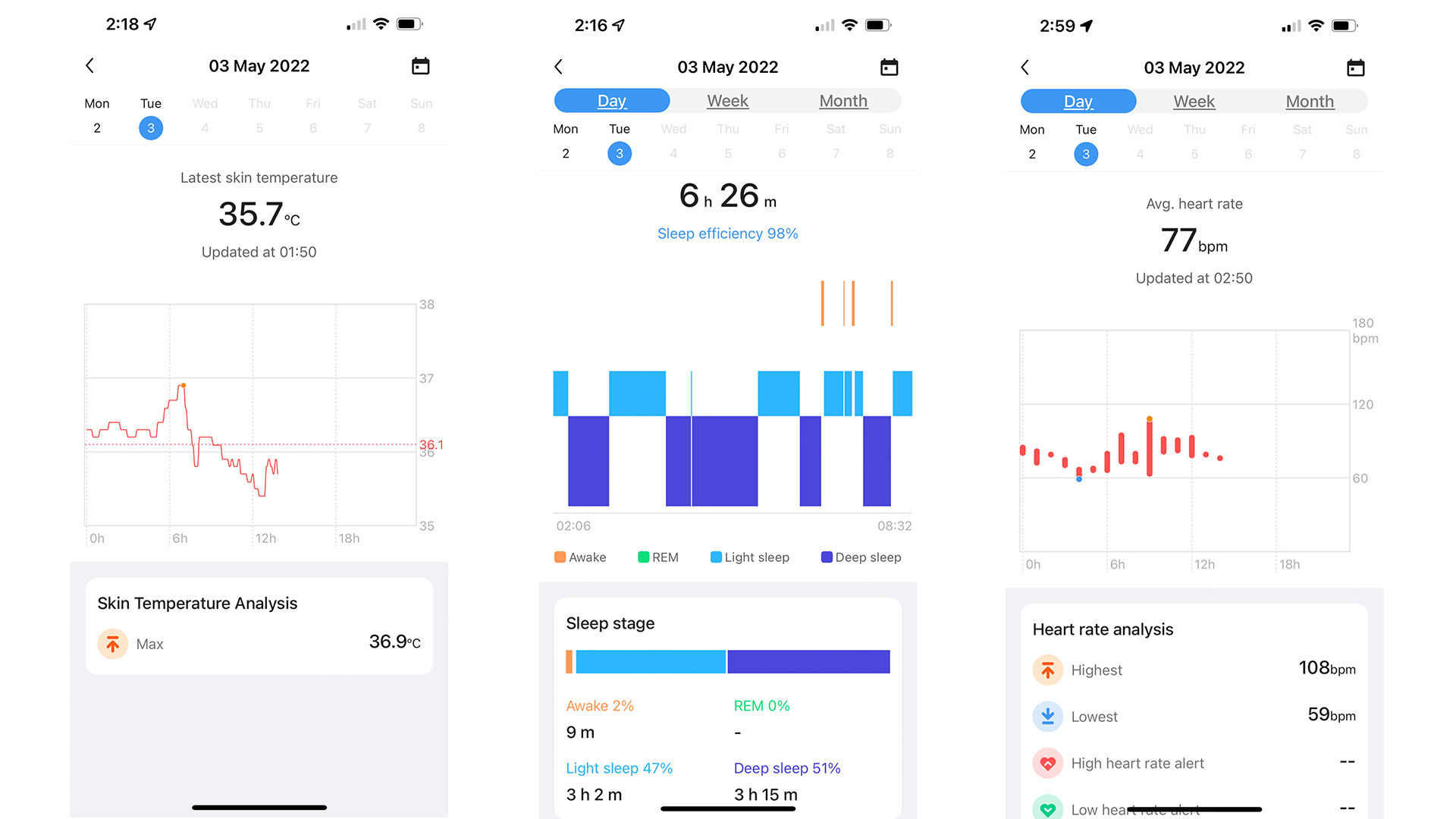
Speaking of which, the Mobvoi app also takes away from the GTH Pro experience. It looks a little antiquated and there’s always a delay when updating fresh data from the watch. Moreover, from our experience with the iOS version, not all functionality works as it should. For example, you can set a Do Not Disturb timeframe on the app, but that doesn’t translate onto the watch – we were woken up several times in the middle of the night due to notifications buzzing until we started switching on the function on the device itself.
So while there’s a heck of a lot of potential here, there are other smartwatches that offer a better overall user experience if you can make your budget stretch even a little. That said, as a no-frills fitness tracker, the GTH Pro is more than capable and accurate.
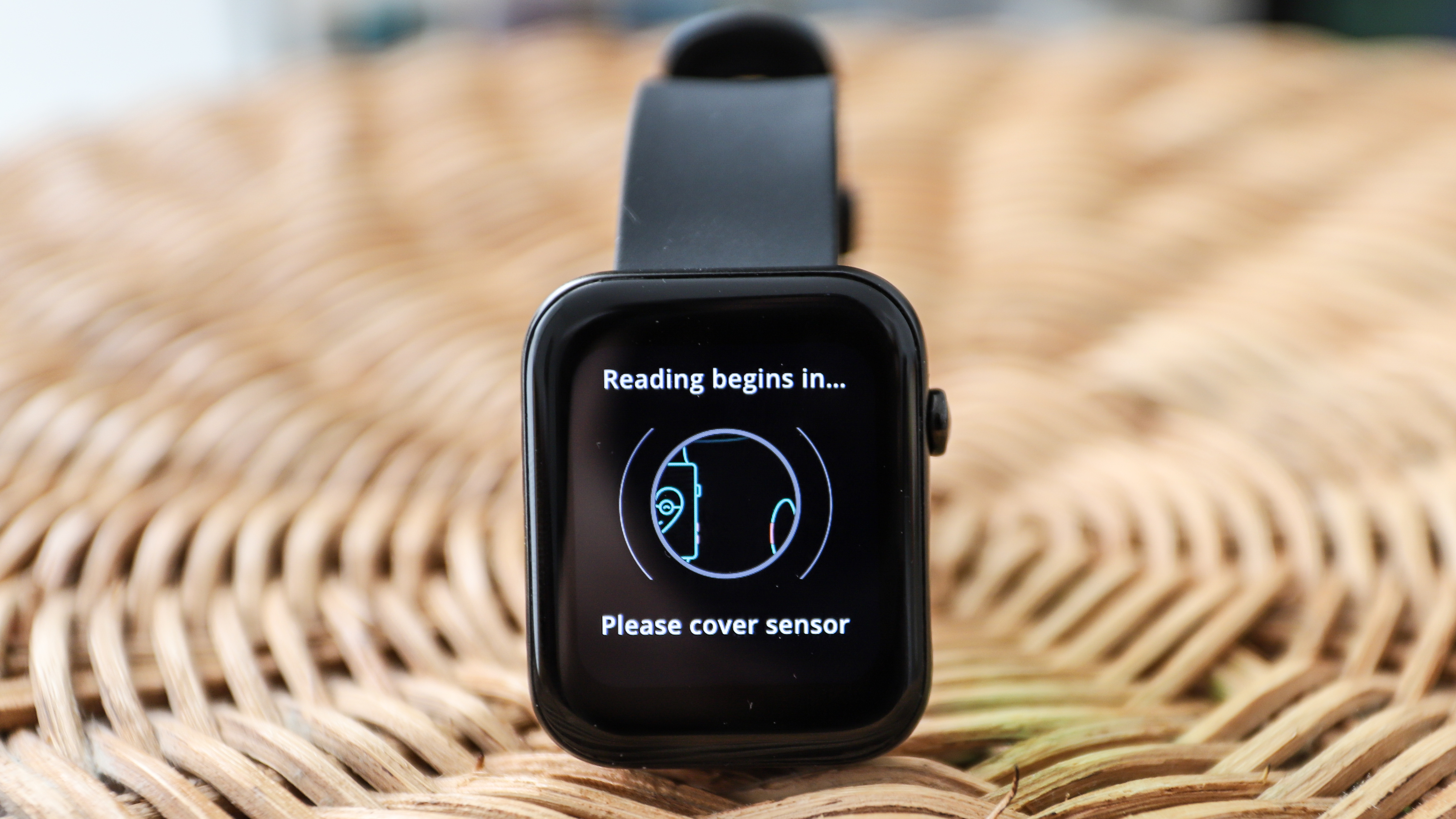
TicWatch GTH Pro review: battery life
Battery life is where the GTH Pro shines. Under the hood is a 260mAh capacity battery that can last for up to 10 days. During our testing, we used all fitness and health parameters a few times a day and saw a battery drain of less than 10% per day.
Considering how limited the watch interface itself is, we suspect you can easily stretch the battery life a little more if you aren’t constantly doing guided breathing or taking your pulse count several times a day.
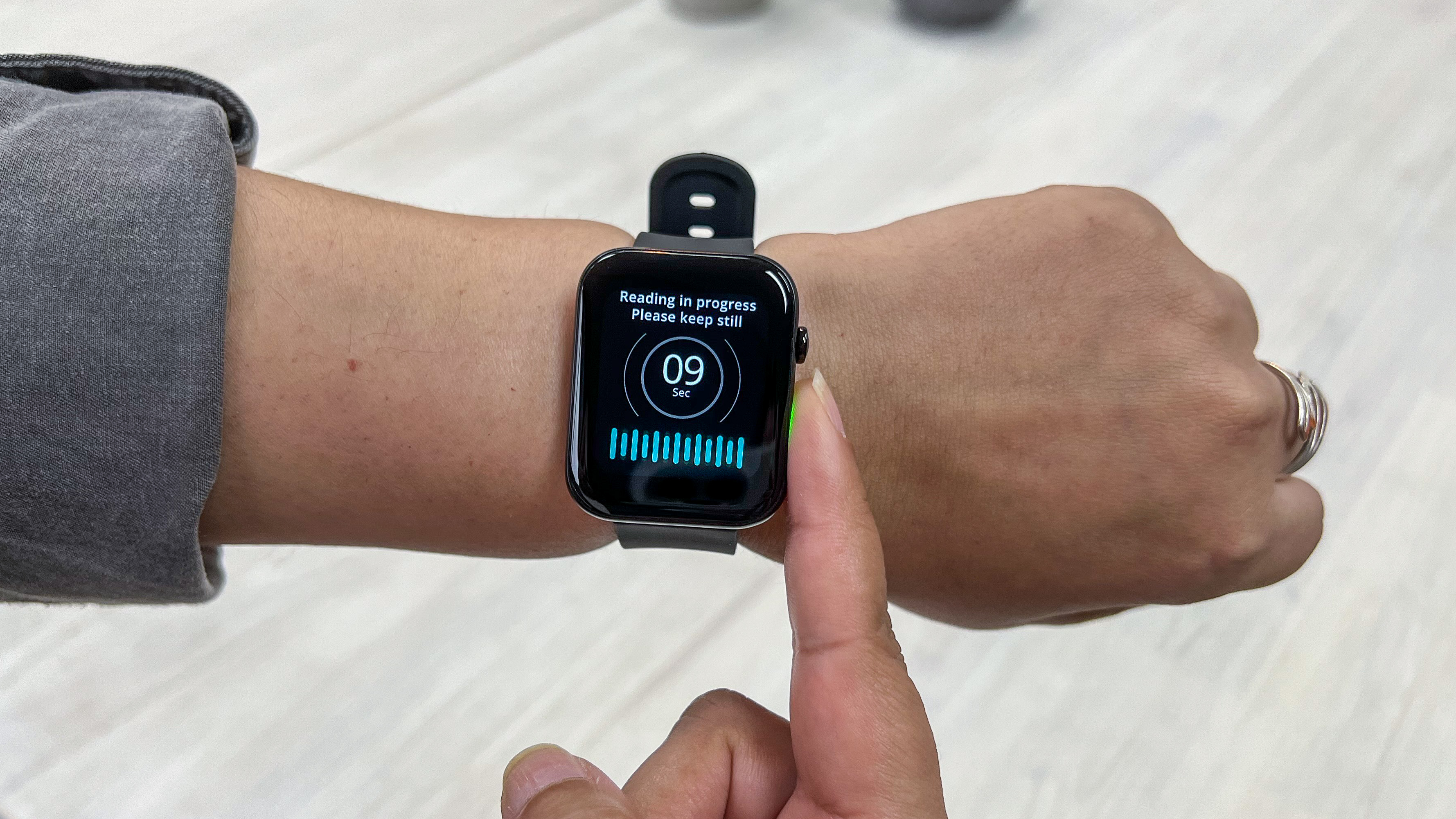
TicWatch GTH Pro review: verdict
It’s hard to find smartwatches at this price point that offer you a way to keep tabs on your ticker’s plumbing. But whether or not the GTH Pro is right for you will depend on what your personal needs are. If you’re someone who suffers from high cholesterol or you're a fitness beginner looking to improve your stamina and breathing, you could find some real use from the Arty readings. If Mobvoi could find a way to improve the inconsistencies, then the GTH Pro can be a real winner.
As a basic, no-frills fitness tracker, the GTH Pro is more than capable. However, if you really need a more immersive notification interface and better app support from your smartwatch, you’ll need to look elsewhere.
TicWatch GTH Pro review: also consider
The fitness tracker market is a crowded place with several options available across a wide range of price points. And while the more premium options offer a feature-rich experience, there are several budget smartwatches that are reliable, capable and won’t break the bank. Like the Amazfit GTS 2e that comes with a great screen, built-in GPS and plenty of fitness features. That said, Amazfit isn’t officially available in all markets, making a Fitbit fitness tracker a great alternative.
If heart health is important, then the Fitbit Charge 5 is a good alternative that allows you to take ECG readings alongside all the other fitness and health parameters Fitbit is so good at. If you’re willing to unlock Fitbit Premium, you’ll get even more in-depth metrics to monitor your health.
The Fitbit Versa 3 is also a better alternative if you can make your budget stretch a little, but you aren't getting too many advanced health metrics here (as you would from the Fitbit Sense). For your money, the Versa 3 gives you a superior overall smartwatch experience.
Sign up to the T3 newsletter for smarter living straight to your inbox
Get all the latest news, reviews, deals and buying guides on gorgeous tech, home and active products from the T3 experts
Sharmishta is T3 sister site TechRadar's Managing Editor for APAC, and contributes to T3 on occasion, particularly if any local Aussie product testing is needed. She's a keen photographer, managing Digital Camera World for the APAC region, and also helps produce two of Future's photography magazines in Australia. She loves trying to find ways and means to make her home (and life) smarter and, when she's got time to herself, she can usually be found with her nose buried in a good book... erm, ereader.
-
 Polar’s new subscription feature lands in the shadow of Garmin’s Connect+ rollout
Polar’s new subscription feature lands in the shadow of Garmin’s Connect+ rolloutPR genius or timing disaster? Polar’s new Fitness Programme adds adaptive training to its ecosystem
By Matt Kollat Published
-
 New Orient Star watches offer a glimpse of the magic within
New Orient Star watches offer a glimpse of the magic withinThere are two new skeleton pieces
By Sam Cross Published
-
 Netflix's most surprising 100%-rated sci-fi series returns with gorgeous trailer
Netflix's most surprising 100%-rated sci-fi series returns with gorgeous trailerLove Death + Robots is back for more
By Max Freeman-Mills Published